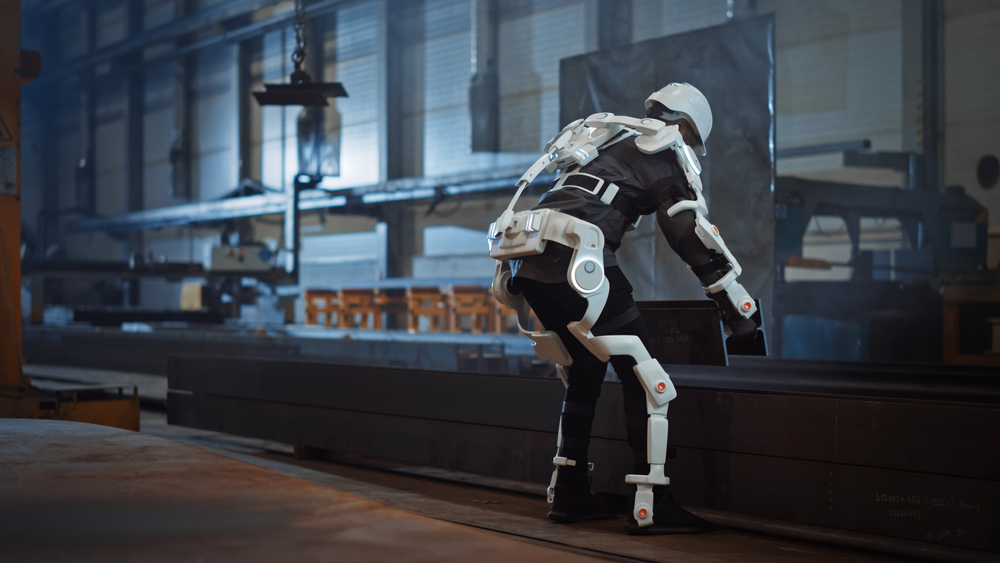In recent years, exoskeletons have moved from science fiction into real-life application. No longer reserved for rehabilitation or military settings, these robotic systems now target recreational and athletic users. One cutting-edge exoskeleton, designed for outdoor enthusiasts, enables users to hike longer and run faster by reducing fatigue and improving endurance. This shift signals a new era where robotic assistance becomes part of everyday movement, from trails to sidewalks.
What Is an Exoskeleton and How Does It Work
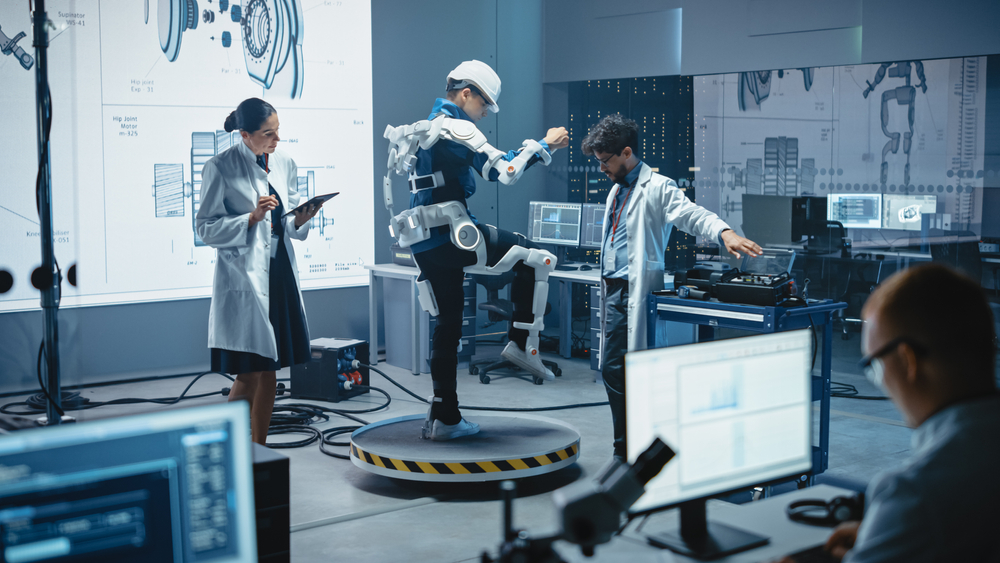
An exoskeleton is a wearable robotic frame that enhances human movement. Unlike bulky full-body versions in industrial settings, this modern consumer-grade exoskeleton supports the lower body, especially the hips and legs. It uses lightweight metal parts, compact electric motors, and motion sensors to detect how a person walks or runs. Once it recognizes a movement pattern, it provides timed bursts of mechanical assistance.
This assistance reduces the workload on leg muscles, helping the user conserve energy. Advanced algorithms adjust the level of support in real time. These algorithms are trained to recognize subtle differences in stride, pace, and terrain, ensuring that the exoskeleton moves in sync with the person wearing it.
Spotlight on the Hypershell X Exoskeleton
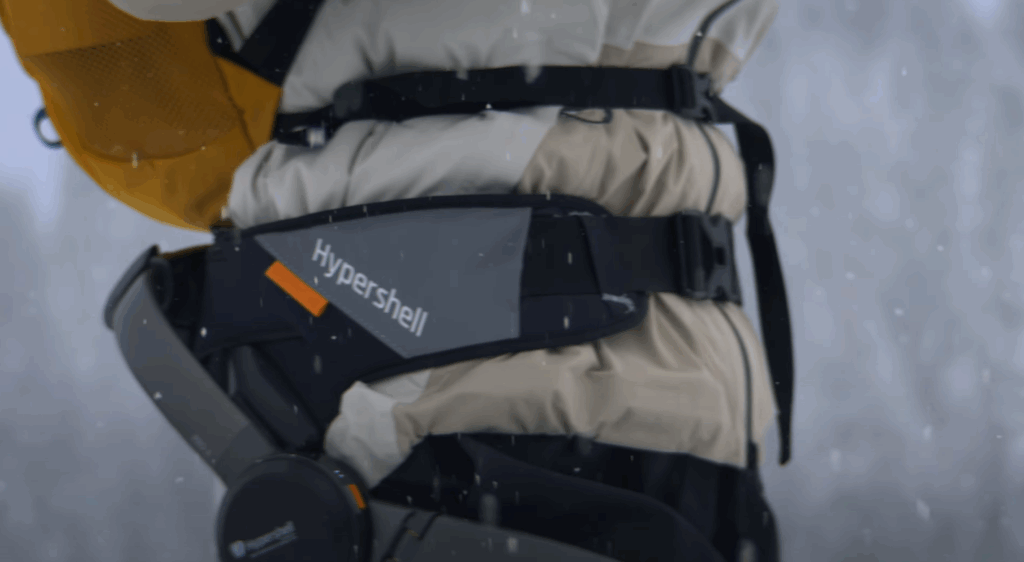
One of the most talked-about entries in the wearable mobility space is the Hypershell X exoskeleton. This device has garnered attention for blending compact engineering with high-performance support for everyday explorers and athletes alike. Developed by a startup focused on outdoor mobility, the Hypershell X is designed to provide powerful lower-body assistance without the bulk or complexity seen in earlier models.
The Hypershell X uses a proprietary motor system capable of delivering up to 1 horsepower of assistive force. This power is distributed through its hip-based structure, helping users walk, run, and climb with significantly less muscular effort. Its lightweight design, weighing under two kilograms, makes it one of the lightest powered exoskeletons in its category. The design includes ergonomic joints and a low-profile waist harness, which work together to keep the device stable and unobtrusive during movement.
Battery life is a strong point, with the Hypershell X offering up to 25 kilometers of assistance on a single charge. The unit recharges in about 90 minutes and supports quick-swap battery packs for longer treks. It also includes smart sensors and adaptive algorithms that respond to changes in pace, slope, and terrain in real time. Users can monitor performance or switch activity modes through an intuitive mobile app.
What sets the Hypershell X apart is its focus on real-world usability. It can be used in cities, hiking trails, or even during routine tasks like carrying heavy items up stairs. With crowdfunding support and growing interest from outdoor communities, the Hypershell X is shaping up to be one of the most accessible and versatile exoskeletons available. For people looking to extend their endurance or reduce the physical strain of movement, it offers a powerful yet practical solution.
Read More: Swedes Are Upgrading Their Hands, and It’s Both Impressive and Unsettling
Key Features That Make This Exoskeleton Unique

Engineers behind this device focused on creating something both powerful and practical. The exoskeleton weighs under five kilograms, which makes it easy to wear for long periods without discomfort. It connects at the hips and thighs, acting like a mechanical extension of your leg muscles. The system includes a battery pack that lasts up to six hours, depending on use.
One major highlight is its multiple modes for different activities. Whether walking uphill, running on flat ground, or hiking rugged trails, the exoskeleton adapts by adjusting torque and timing. These modes can be changed via a smartphone app or a button on the belt unit, giving users full control over their experience.
Design Focused on Comfort and Practical Use
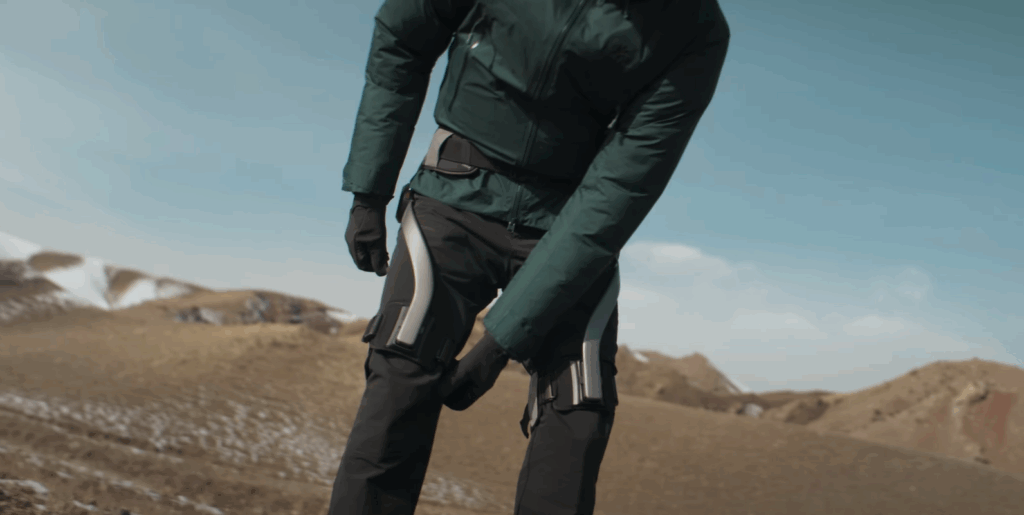
Comfort plays a major role in making the exoskeleton usable beyond labs and test fields. This model includes padded straps and breathable materials to ensure minimal skin irritation. The motors are positioned low on the legs, lowering the center of gravity and improving stability.
The design also considers compatibility with outdoor gear. It fits under backpacks, does not interfere with trekking poles, and allows for free knee movement. Ventilated materials help reduce sweating during extended hikes. Early users say it feels like wearing a supportive harness rather than bulky equipment.
How the Exoskeleton Improves Endurance and Speed

What sets this exoskeleton apart is not just speed, but sustainability. In tests, it reduced the energy needed for walking by 14 percent and for running by 9 percent. These savings might sound small, but over several miles, the difference becomes very noticeable.
Less energy use means less muscle fatigue. Hikers who wore the exoskeleton reported being able to cover longer distances without feeling as sore afterward. Runners maintained higher speeds for extended periods without the same burn in their legs. Recovery times improved too, with users needing fewer rest days between hikes or runs.
Exoskeleton Technology Gains Military and Athletic Interest
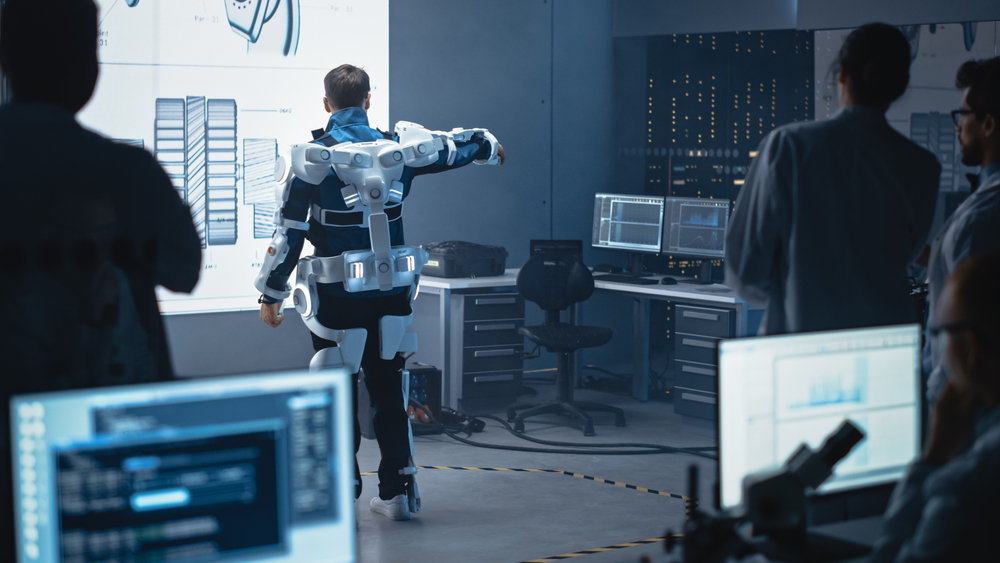
The military has long been interested in robotic mobility aids. In combat or field missions, carrying heavy loads is physically demanding. Early exoskeletons were too bulky or power-hungry for regular use. Newer versions, like this one, offer better range and comfort. They are now being tested by soldiers in terrain exercises and endurance marches.
Athletes are also taking notice. Although competitions still prohibit such technology, professional teams are exploring exoskeletons for training purposes. These devices could help athletes build strength while reducing injury risk. For distance runners, every bit of energy savings counts. By using the exoskeleton in practice, they can improve their biomechanics and conditioning without overtraining.
Real-World Testing in Trails and Urban Areas
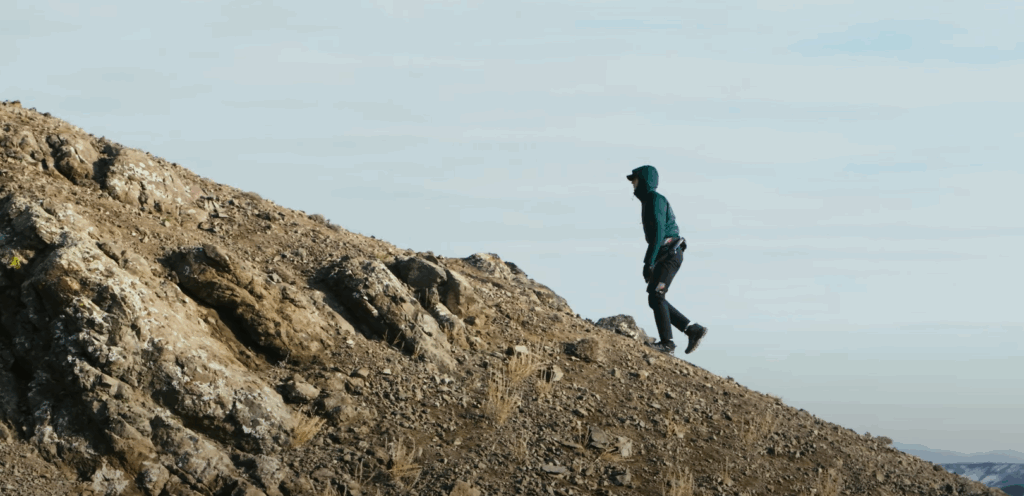
To prove the exoskeleton works outside of controlled environments, developers tested it in national parks, city streets, and remote trails. Participants included backpackers, amateur trail runners, and outdoor photographers. Most users needed about an hour to get used to it, but after that, it became part of their natural movement.
Hikers reported needing fewer breaks and were able to tackle longer trails with consistent pacing. The exoskeleton provided extra propulsion on uphill climbs, making inclines less intimidating. In urban areas, users found it helpful for walking commutes and carrying groceries up stairs. The flexibility to perform in multiple environments makes it a strong candidate for both fitness and daily use.
Power Supply and Battery Considerations

One limitation of any robotic device is power. The exoskeleton runs on a rechargeable lithium-ion battery that delivers between four to six hours of use. This is enough for most daily hikes or long training sessions. The device charges fully in about two hours using a wall outlet.
For multi-day treks, users can swap batteries on the go. The system allows hot-swapping, so you do not have to remove the whole frame to replace the power unit. Future upgrades may include solar panels or kinetic energy recharging, though those features are still in development.
Challenges Facing Consumer Exoskeletons
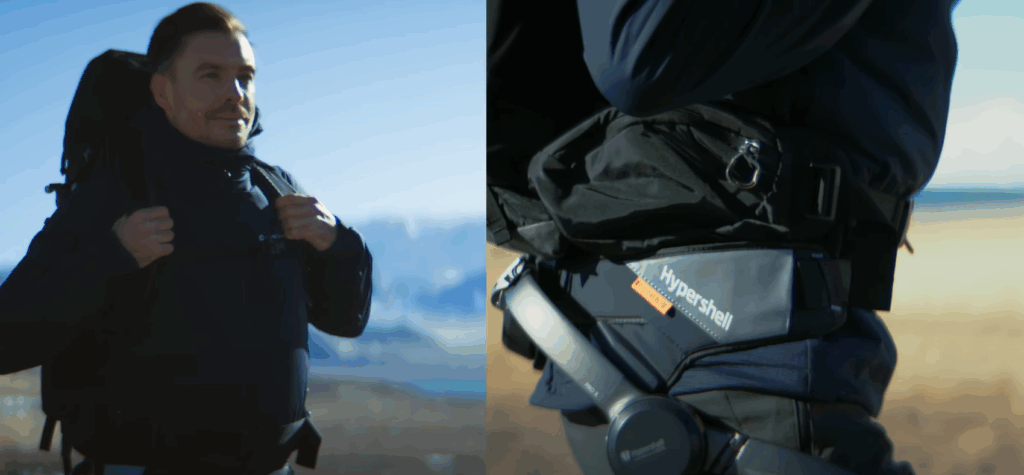
Despite the benefits, there are challenges. Cost is a major one. Right now, a high-performance exoskeleton costs as much as a premium electric bike. That makes it a luxury for many outdoor enthusiasts. Developers hope that mass production will eventually lower prices.
There are also terrain limitations. While effective on trails and mild inclines, the exoskeleton can get in the way on rocky climbs or tight passages. The frame sometimes snags on branches or rocks. Engineers are working on a slimmer version that may fix these problems.
Public perception can be another hurdle. Some hikers feel using an exoskeleton removes the purity of physical effort. Others argue it gives an unfair edge in endurance races. Still, many believe it opens up hiking to more people, especially those who are older or recovering from injury.
Exoskeleton Use for Seniors and Rehab Patients

Not everyone buying this device is an athlete. Older adults or people with joint problems are also finding the exoskeleton useful. It provides enough mechanical support to allow walking or hiking without relying on canes or walking sticks. For those recovering from injury, it offers controlled movement with reduced strain.
Physical therapists have begun exploring its role in rehab programs. By reducing pressure on knees and hips, the exoskeleton allows patients to rebuild strength while avoiding overuse. It can also be adjusted to provide less support over time, helping users gradually regain full independence.
What the Future Holds for Exoskeleton Development

This exoskeleton is only the beginning. As technology advances, future models will be lighter, more energy-efficient, and smarter. Developers are already working on integrating environmental sensors, fitness tracking, and AI systems that adjust support automatically based on your heart rate, slope angle, and fatigue level.
Some models may even feature GPS syncing to optimize assistance based on trail conditions. If you are climbing a steep hill, the exoskeleton might increase push power. If you are descending, it might provide extra knee support to reduce joint stress. These adaptive features will likely become standard as demand grows.
Psychological Benefits of Enhanced Mobility

While most attention focuses on physical performance, there is also a psychological side. People who use the exoskeleton often feel more confident in their abilities. Knowing that extra support is available encourages them to take on more challenging hikes or resume activities they had given up.
This sense of empowerment is not just emotional. Studies show that consistent movement improves mental health, lowers stress, and strengthens the immune system. By extending the amount of time people can spend moving comfortably, the exoskeleton promotes overall well-being.
The Broader Movement Toward Assistive Technology

Wearable robotics are becoming more common. From smart prosthetics to AI-powered glasses for the visually impaired, technology is reshaping how we navigate the world. The exoskeleton is part of this trend, providing mobility without compromising independence.
What was once futuristic is now practical. In the next few years, we can expect greater adoption across industries. Construction, logistics, emergency response, and even delivery services could all benefit from wearable strength support.
A New Path for Outdoor Exploration

This high-tech exoskeleton is a major step forward in outdoor mobility. By using advanced sensors, responsive motors, and adaptable software, it helps users hike longer, run faster, and recover more efficiently. Whether you are an athlete, a weekend explorer, or someone returning to movement after injury, the benefits are real.
The exoskeleton makes physical activity more accessible and less taxing. It invites people of all ages and fitness levels to reclaim the joy of motion. As technology continues to evolve, this device could become as essential to adventurers as a good pair of boots. In a world where innovation meets nature, the exoskeleton is paving the way forward, one step at a time.
Read More: 20 Modern Designs That Prove the Future Is Already Here
Disclaimer: This article was created with AI assistance and edited by a human for accuracy and clarity.
